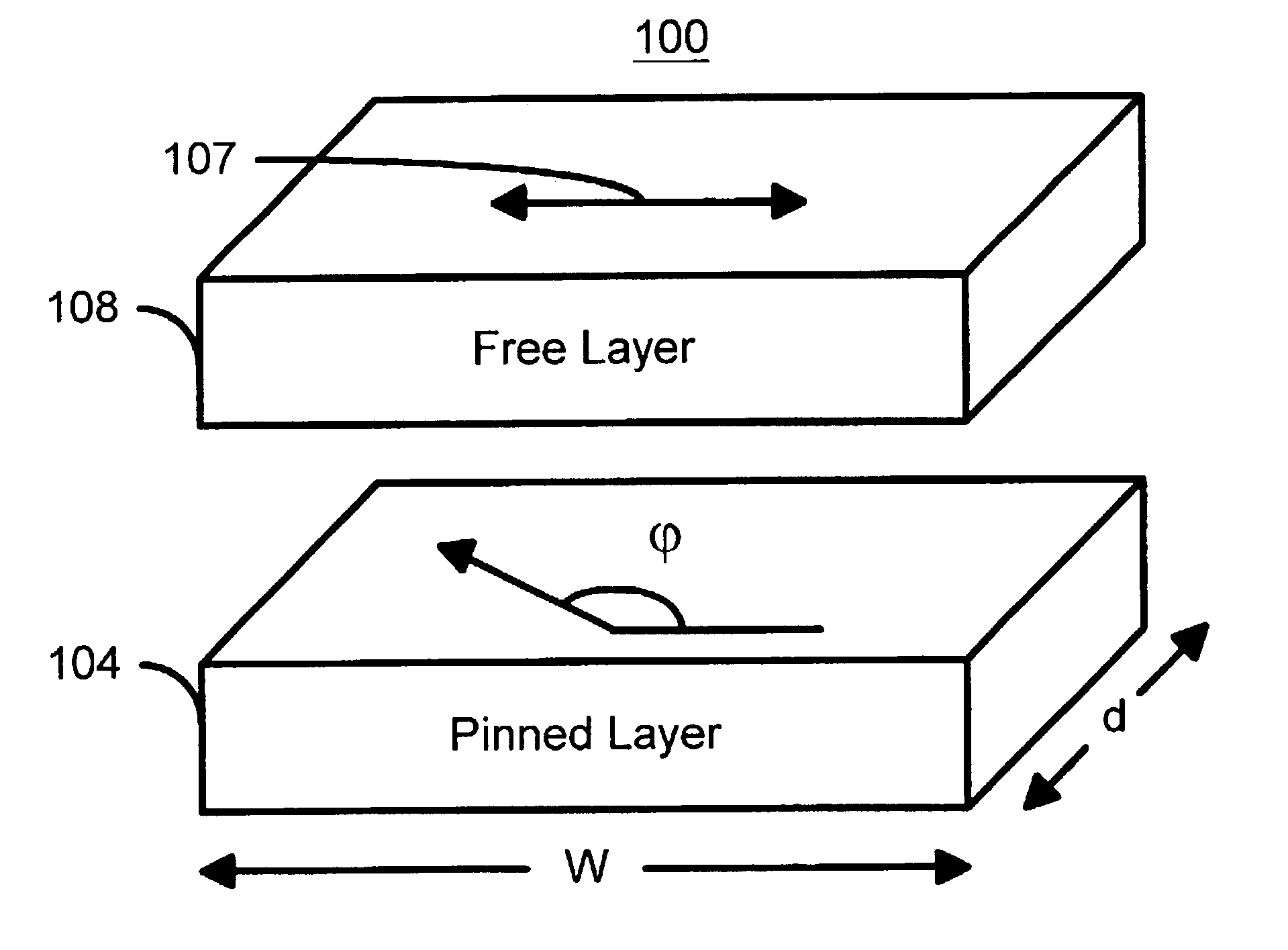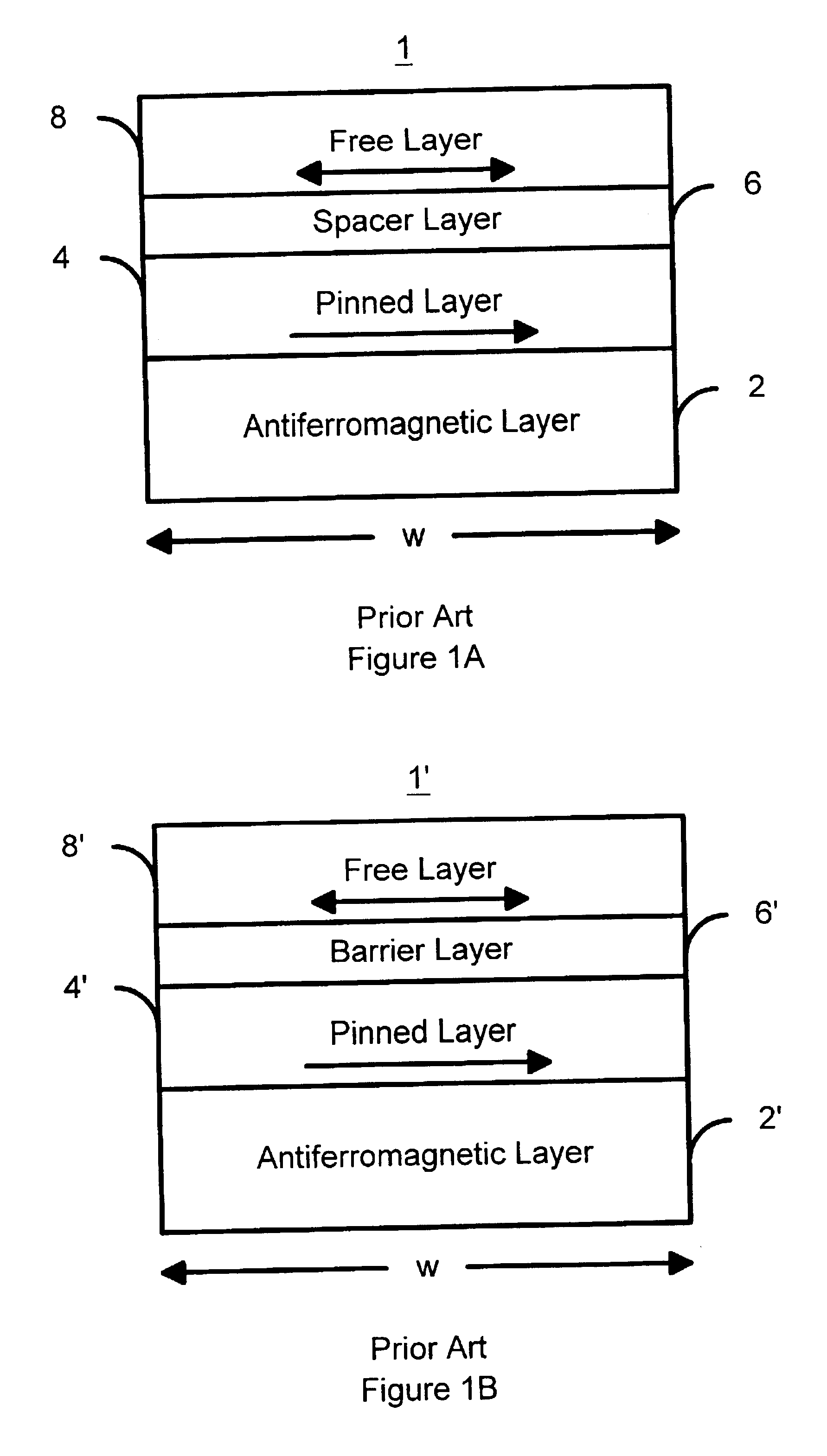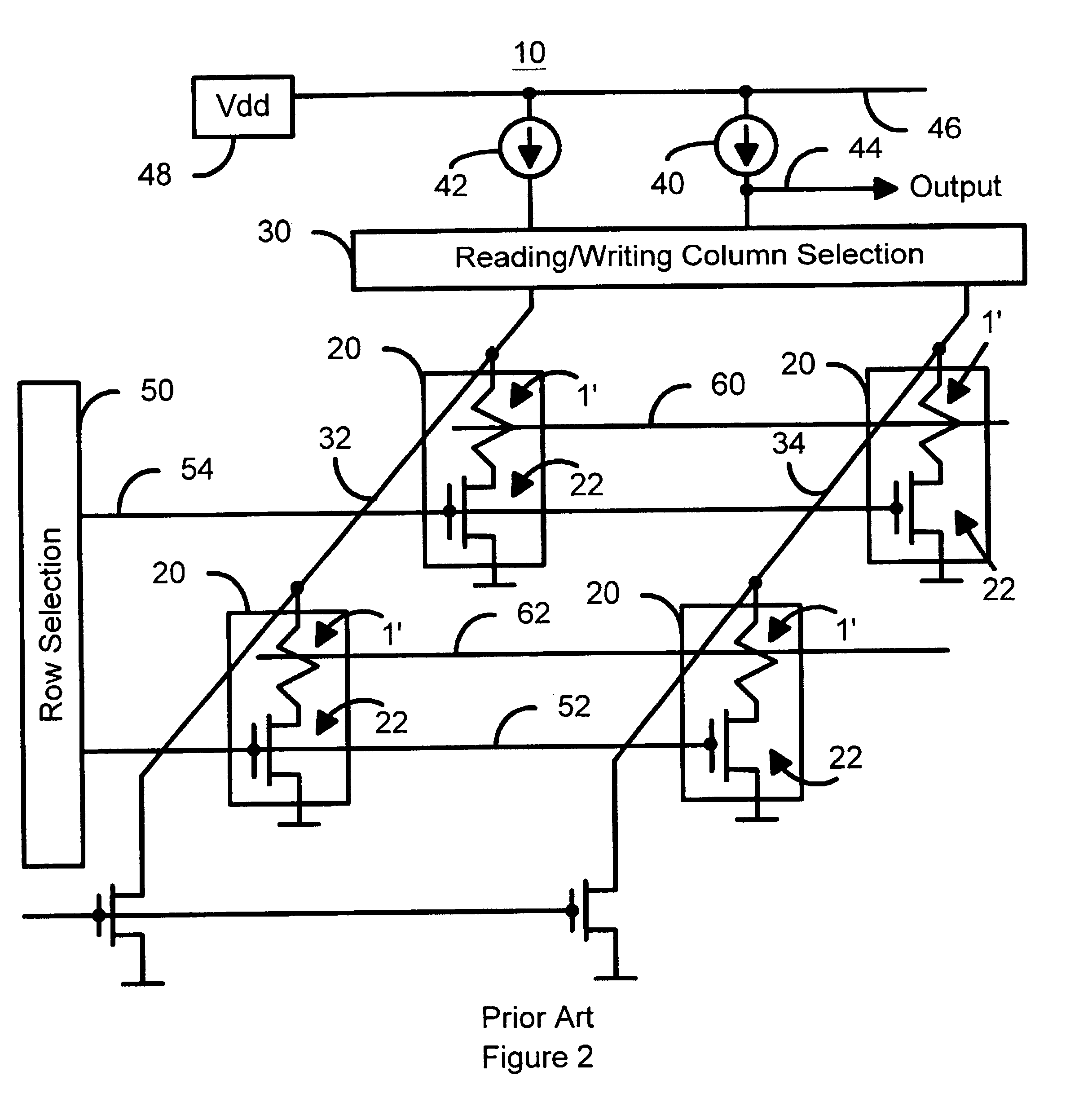Off-axis pinned layer magnetic element utilizing spin transfer and an MRAM device using the magnetic element
a magnetic element and spin transfer technology, applied in the field of magnetic memory systems, can solve the problems of increasing the area and complexity of b>20/b>, limiting the write current amplitude, and increasing the cross talk and power consumption, so as to achieve a high output signal and a magnetic memory, and shorten the write time
- Summary
- Abstract
- Description
- Claims
- Application Information
AI Technical Summary
Benefits of technology
Problems solved by technology
Method used
Image
Examples
first embodiment
[0073]FIGS. 8A-8C are more detailed embodiments of various methods for performing the process 200. FIG. 8A is a flow chart depicting a method 200′ in accordance with the present invention for providing a magnetic element in accordance with the present invention. For clarity, the method 200′ is described in the context of the magnetic element 100. However, the method 200′ could be adapted to other magnetic elements. The antiferromagnetic layer 102 is provided, via step 202′. In a preferred embodiment, the antiferromagnetic layer 102 is provided on the appropriate seed layer. The pinned layer 104 is provided in step 204′. Step 204′ could include providing a synthetic pinned layer. The nonmagnetic intermediate layer 106 is provided in step 206′. The free layer 108 having an easy axis in a particular direction is provided in step 208′. Step 208′ could include providing a synthetic free layer. The antiferromagnetic layer 102 is annealed at the appropriate temperature and field in order t...
second embodiment
[0074]FIG. 8B is a flow chart depicting a method 200″ in accordance with the present invention for providing a magnetic element in accordance with the present invention. For clarity, the method 200″ is described in the context of the magnetic element 100. However, the method 200″ could be adapted to other magnetic elements. The antiferromagnetic layer 102 may optionally be provided, via step 202″. In a preferred embodiment, the antiferromagnetic layer 102 is provided on the appropriate seed layer. Flowever, the antiferromagnetic layer 102 may be omitted, in favor of, for example, using just high coercivity induced by shape anisotropy and / or. crystalline anisotropy. The pinned layer 104 is provided in step 204″. Step 204″ could include providing a synthetic pinned layer. The nonmagnetic intermediate layer 106 is provided in step 206″. The free layer 108 having an easy axis in a particular direction is provided in step 208″. Step 208″ could include providing a synthetic free layer. Th...
third embodiment
[0075]FIG. 8C is a flow chart depicting a method in accordance with the present invention for providing a magnetic element in accordance with the present invention. For clarity, the method 200′″ is described in the context of the magnetic element 100. However, the method 200′″ could be adapted to other magnetic elements. The pinned layer 104 having a low magnetic anisotropy is provided in step 204′″. Step 204′″ could include providing a synthetic pinned layer. The nonmagnetic intermediate layer 106 is provided in step 206′″. The free layer 108 having an easy axis in a particular direction is provided in step 208′″. The free layer 108 provided in step 208′″ has a higher anisotropy than the pinned layer 104. Step 208′″ could include providing a synthetic free layer. An external magnetic field is applied to ensure that the magnetization of the pinned layer 104 is oriented at an angle, φ, with respect to the direction in which easy axis 107 of the free layer 108 is set, via step 211.
[00...
PUM
 Login to View More
Login to View More Abstract
Description
Claims
Application Information
 Login to View More
Login to View More - R&D
- Intellectual Property
- Life Sciences
- Materials
- Tech Scout
- Unparalleled Data Quality
- Higher Quality Content
- 60% Fewer Hallucinations
Browse by: Latest US Patents, China's latest patents, Technical Efficacy Thesaurus, Application Domain, Technology Topic, Popular Technical Reports.
© 2025 PatSnap. All rights reserved.Legal|Privacy policy|Modern Slavery Act Transparency Statement|Sitemap|About US| Contact US: help@patsnap.com



